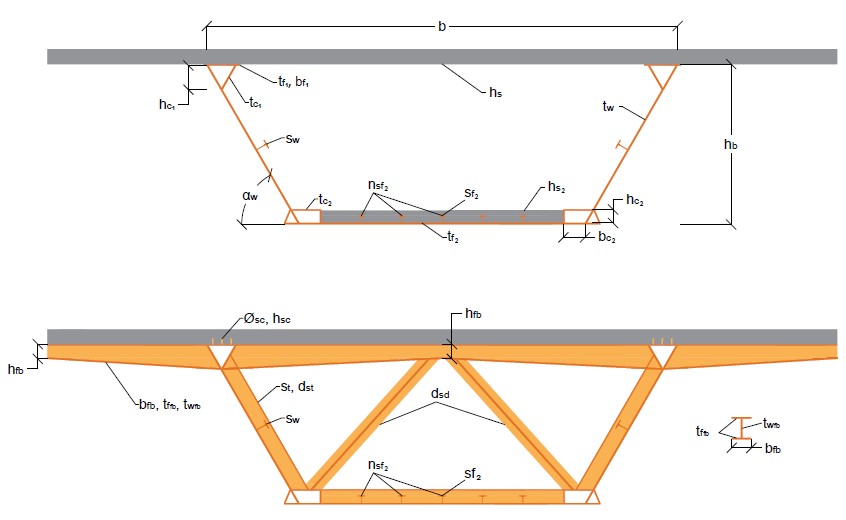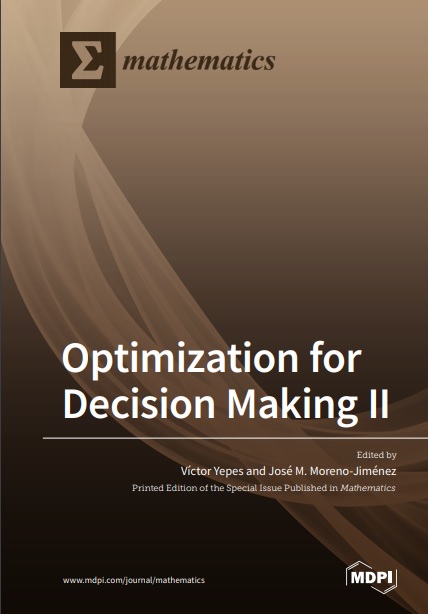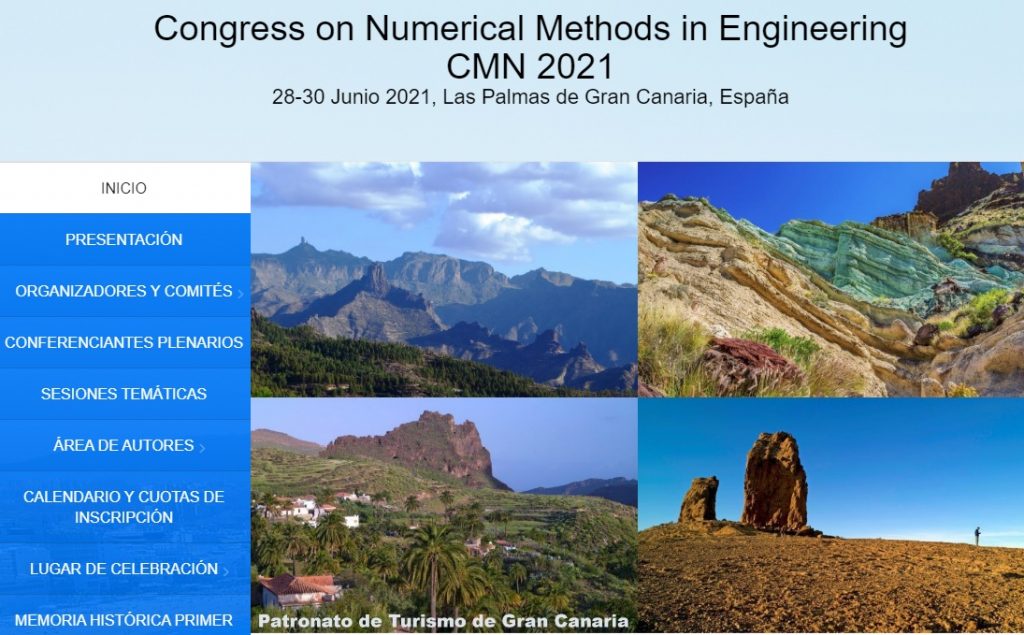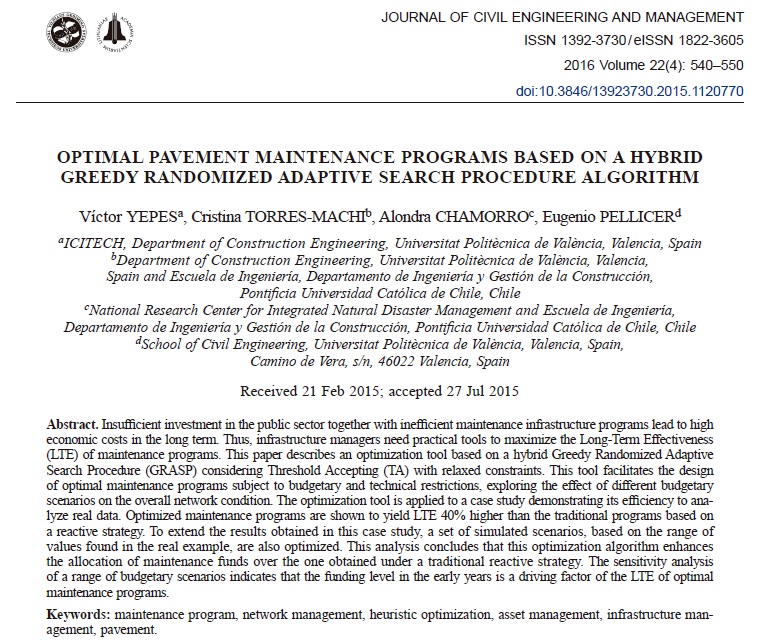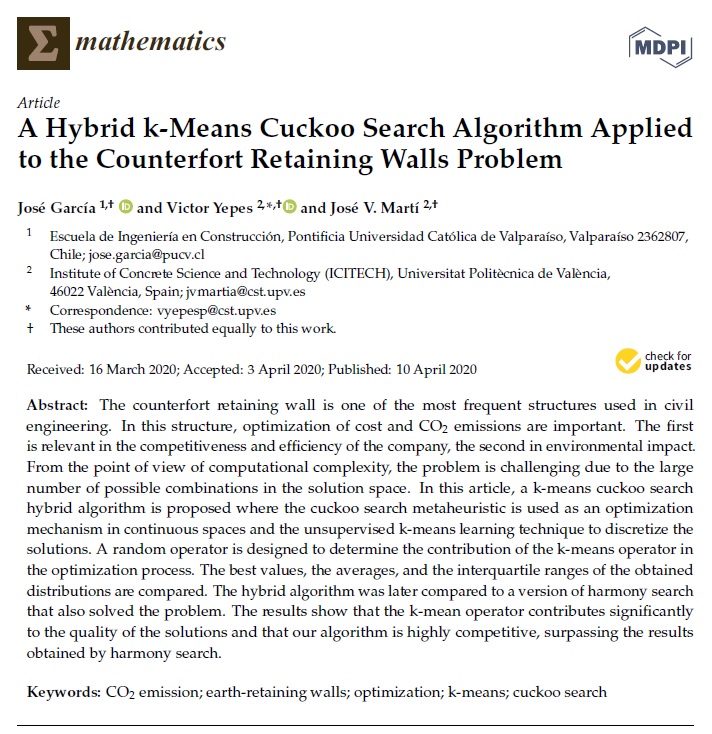 Acaban de publicarnos un artículo en el Journal of Construction Engineering and Management-ASCE, revista indexada en el primer cuartil del JCR. Se trata de optimizar la vía en placa mediante metamodelos para mejorar la sostenibilidad de la construcción ferroviaria. El trabajo se enmarca dentro del proyecto de investigación HYDELIFE que dirijo como investigador principal en la Universitat Politècnica de València.
Acaban de publicarnos un artículo en el Journal of Construction Engineering and Management-ASCE, revista indexada en el primer cuartil del JCR. Se trata de optimizar la vía en placa mediante metamodelos para mejorar la sostenibilidad de la construcción ferroviaria. El trabajo se enmarca dentro del proyecto de investigación HYDELIFE que dirijo como investigador principal en la Universitat Politècnica de València.
Este artículo no está publicado en abierto, pero podéis encontrarlo, solicitándolo, en esta dirección: https://www.researchgate.net/publication/360243758_Slab_Track_Optimization_Using_Metamodels_to_Improve_Rail_Construction_Sustainability o bien descargarlo directamente de la página web de ASCE: https://ascelibrary.org/doi/full/10.1061/%28ASCE%29CO.1943-7862.0002288
El ferrocarril es un medio de transporte eficaz, sin embargo, la construcción y el mantenimiento de las vías férreas tienen un impacto medioambiental importante en términos de emisiones de CO2 y uso de materias primas. Esto es especialmente cierto en el caso de la vía en placa, pues necesitan grandes cantidades de hormigón. También son más caras de construir que las vías convencionales con balasto, pero requieren menos mantenimiento y presentan otras ventajas que las convierten en una buena alternativa, especialmente para las líneas de alta velocidad. Para contribuir a un ferrocarril más sostenible, este trabajo pretende optimizar el diseño de una de las tipologías de vía en placa más comunes: RHEDA 2000. El objetivo principal es reducir la cantidad de hormigón necesaria para construir la losa sin comprometer su rendimiento y durabilidad. Para ello, se utilizó un modelo basado en el método de los elementos finitos (MEF) de la vía, emparejado con un metamodelo de kriging que permite analizar múltiples opciones de espesor de la losa y resistencia del hormigón de forma puntual. Mediante kriging, se obtuvieron soluciones óptimas que se validaron a través del modelo MEF para garantizar el cumplimiento de las restricciones mecánicas y geométricas predefinidas. Partiendo de una configuración inicial con una losa de 30 cm de hormigón con una resistencia característica de 40 MPa, se llegó a una solución optimizada, consistente en una losa de 24 cm de hormigón con una resistencia de 45 MPa, que arroja una reducción de costes del 17,5%. Este proceso puede aplicarse ahora a otras tipologías de losas para obtener diseños más sostenibles.
Abstract:
Railways are an efficient transport mode, but building and maintaining railway tracks have a significant environmental impact in terms of CO2 emissions and the use of raw materials. This is particularly true for slab tracks, which require large quantities of concrete. They are also more expensive to build than conventional ballasted tracks, but require less maintenance and have other advantages that make them a good alternative, especially for high-speed lines. To contribute to more sustainable railways, this paper aims to optimize the design of one of the most common slab track typologies: RHEDA 2000. The main objective is to reduce the amount of concrete required to build the slab without compromising its performance and durability. To do so, a model based on the finite-element method (FEM) of the track was used, paired with a kriging metamodel to allow analyzing multiple options of slab thickness and concrete strength in a timely manner. By means of kriging, optimal solutions were obtained and then validated through the FEM model to ensure that predefined mechanical and geometrical constraints were met. Starting from an initial setup with a 30-cm slab made of concrete with a characteristic strength of 40 MPa, an optimized solution was reached, consisting of a 24-cm slab made of concrete with a strength of 45 MPa, which yields a cost reduction of 17.5%. This process may be now applied to other slab typologies to obtain more sustainable designs.

